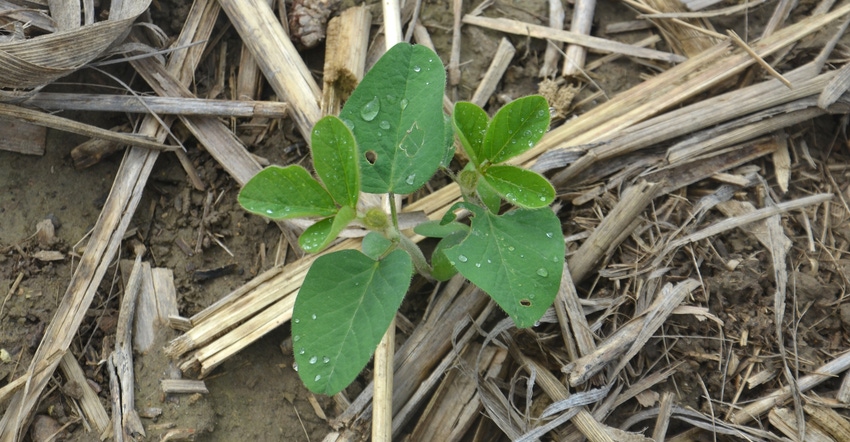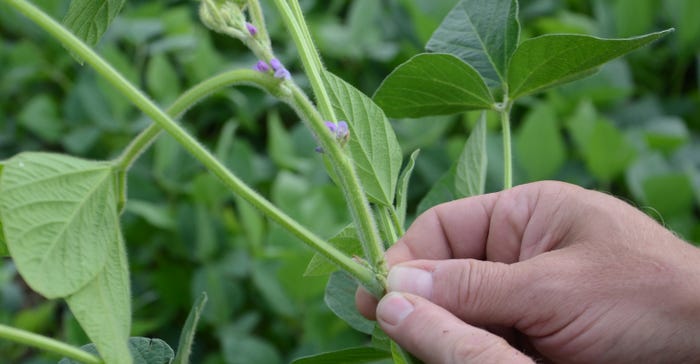
What does a product label mean when it says “flowering stage” for soybeans? Why is it important to know when that stage begins? When should you apply fungicides? When should you pull leaf samples for tissue testing?
Steve Gauck, a regional agronomy manager for Beck’s, based near Greensburg, Ind., says if you’re making management decisions about pesticide applications, fungicides and tissue testing, you will make better decisions if you know how to determine growth stage of plants correctly. Beck’s sponsors Soybean Watch ’22.
Related: Hula-hoop time in soybean fields
“The vegetative stages are designated by ‘V’ numbers for vegetative, and reproductive stages are denoted by ‘R’ numbers,” Gauck says. “If you know the exact growth stage of most plants within a field and monitor growth stages all season, it’s easier to make key decisions which could protect or add to the field yield potential.
“Fungicides are a prime example. Most university research and other testing by Beck’s and other sources indicates the best return on investment from fungicide application in soybeans usually results from an R3 stage application. Being too early or too late with the application may mean a lower ROI.”
To determine growth stages, you will need a resource guide, preferably with pictures. Gauck relies on the Purdue University Corn & Soybean Field Guide. There is also an app version available for soybeans at minimal cost. See the app store.
All V stages. The V stages progress from VC, with cotyledons emerged, to the last V stage before the reproductive phase, which depends upon how many trifoliates are fully exposed.
“The secret to correctly identifying plants in the V stages is to start counting with the trifoliate where the margins of individual leaflets making up the trifoliate no longer touch,” Gauck says. Often, it’s the second trifoliate from the top of the plant.
R1 stage. This is also known as the beginning bloom stage. “If there is an open flower anywhere on the main stem, it’s at the R1 stage,” Gauck says. Note that only flowers on the main stem, not branches, count toward designating the stage of growth.
Some herbicide labels, including those for dicamba herbicides for dicamba-tolerant soybeans, restrict legal application once soybeans reach the R1 stage. In some states, there is also a cutoff date for dicamba herbicides in soybeans. In Indiana, the cutoff is June 20.
If you’re pulling routine tissue samples, Betsy Bower with Ceres Solutions, West Lafayette, Ind., says it’s important to pull a sample at R1. This will provide a report card on nutrient use by plants.

R3 stage. The R3 stage is also referred to as beginning pod stage. Soybeans are in this stage when there is a pod at least one-quarter inch long on one of the four uppermost nodes. You may find tiny pods on lower nodes at R2.
R3 is the ideal stage for applying fungicides, as noted earlier. And if you’re monitoring plant nutrient levels through tissue testing, you may want to take another sample at this stage.
About the Author(s)
You May Also Like




